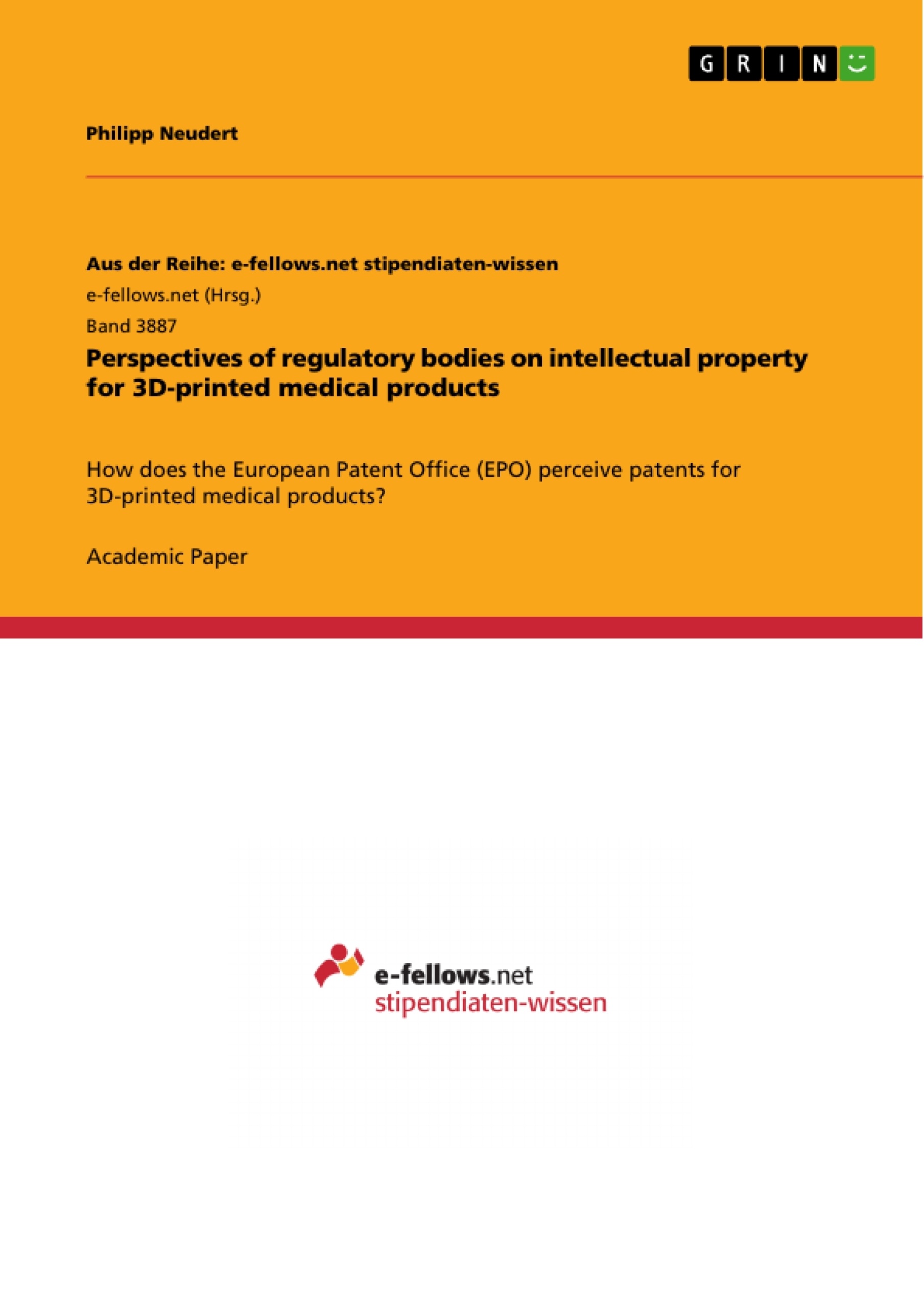This paper investigates the perspective of the European Patent Office (EPO) on intellectual property rights, particularly patents, for 3D-printed medical products. As a powerful regulatory body, the EPO is a key stakeholder in the regulation and handling of emerging technologies. As such a technology, 3D-printing may call policymakers to adapt the regulatory framework to deal with the specialities of 3D-printing and to increase legal certainty. Policymakers can profit from its insights for various reasons: What kind of new regulation may be needed largely depends on how executive organs such as EPO (attempt to) handle the respective technology. Also, insights from practitioners may help policymakers to identify issues that have been neglected by existing legislation – such as the implications of emerging technologies like 3D-printing.
Table of Contents
1. Introduction
2. Patents & 3D-Printing
2.1 The Conventional Perspective on Patents
2.2 Critical & Agnostic Perspectives
2.3 Why 3D-Printing is Special
2.4 Challenges for Policymakers
3. EPO’s perspective on Patents for 3D-printed medical products
3.1. Methodological Note
3.2 Key Results
4. Conclusion
5. Bibliography
- Quote paper
- Philipp Neudert (Author), 2021, Perspectives of regulatory bodies on intellectual property for 3D-printed medical products, Munich, GRIN Verlag, https://www.grin.com/document/1119525
-

-

-

-
Upload your own papers! Earn money and win an iPhone X. -

-
Upload your own papers! Earn money and win an iPhone X. -

-
Upload your own papers! Earn money and win an iPhone X. -

-
Upload your own papers! Earn money and win an iPhone X. -

-
Upload your own papers! Earn money and win an iPhone X. -

-
Upload your own papers! Earn money and win an iPhone X. -

-
Upload your own papers! Earn money and win an iPhone X.

